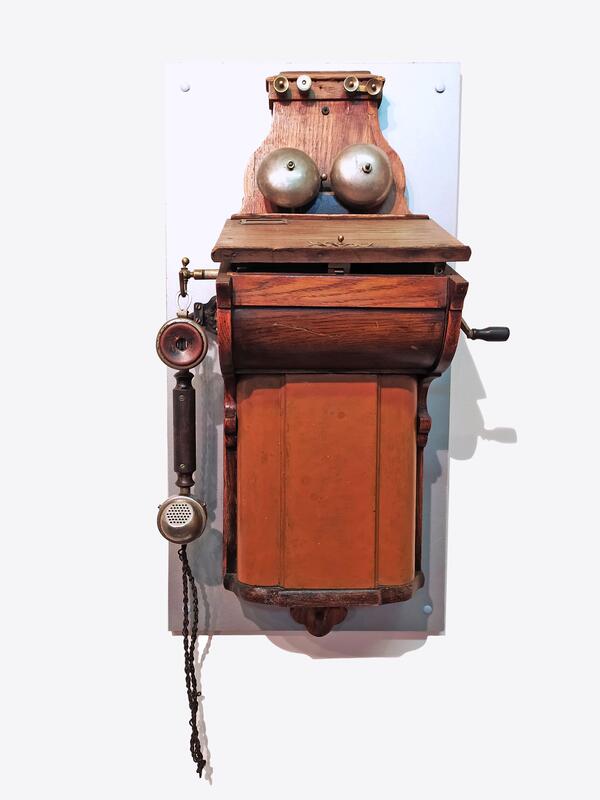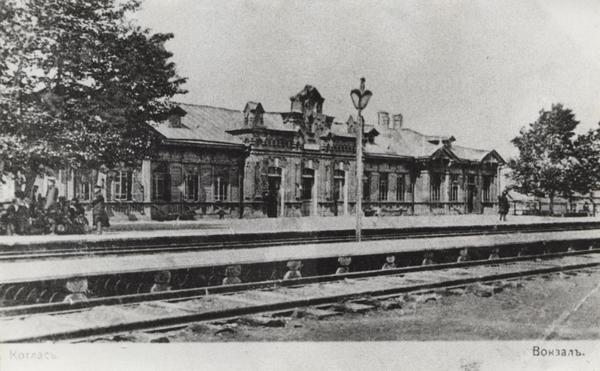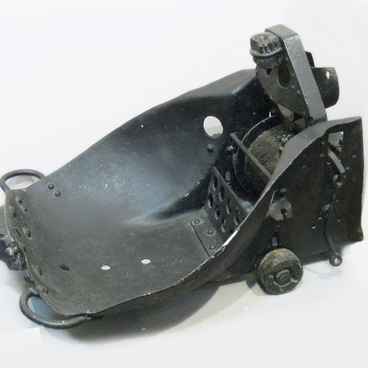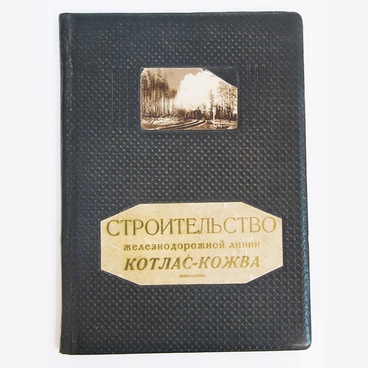The museum collection includes this MB (‘local battery’) telephone with an induction mechanism and a smaller handset. The battery compartment and magnets in the inductor made it possible to call over long distances. At the beginning of the twentieth century, it was located at the Kótlas railway station, and the Kotlasháns used it to call the neighboring town of Velíky Ústyug. The phone was housed in a wooden case and placed on the wall. There is no rotary for dialing, because devices such as these were connected to a telephone exchange, and an employee provided the line of communication.
Telephone apparatus
Creation period
late XIX - early XX century
Dimensions
70х25 cm
Technique
factory production
Collection
Exhibition
1
Open in app#9
Unknown author
Telephone apparatus
#4
#5
Kótlas station, late 19th century
#6
To get through to the station operator, it was necessary to twist the handle of the induction coil that generated the alternating current - this is how the signal was sent to the switchboard. The receiver would then be picked up and the telephone operator would receive information for the connection: the two or three digits of the subscriber’s number. The operator would insert the plug into the desired switch socket and connected the subscribers. After the end of the conversation, it was necessary to hang up and turn the handle again in order to disconnect from the station. At the station, a bash, or “blow-off” valve would release, and the telephone operator would remove the plug from the socket.
In earlier telephones on a flexible wire, there was only a speaker, and the microphone was rigidly attached to the body, so when speaking, you had to bend over the microphone. There is a legend that a Swede, who got tired of holding these pieces separately when setting up a line, came up with the idea of combining a phone and a microphone into one device, and tied them to a stick to free his hand. This may be how the now-familiar telephone receiver was invented.
With the advent of the first telephone exchange in Russia, it wasn’t only new devices that were invented, but also new professions. The work at the stations was carried out by telephone operators. Typically, young and unmarried young ladies aged 18 to 25 were those accepted into the service. It was believed at the time that young girls are more patient and hardy. There were also height restrictions: tall women were recruited, from 165 cm, so that they could reach the jacks located at the top of the bench panel, which were necessary to make certain switchboard connections. The switchboard service was a well-paid job; a telephone operator received a salary of 30-40 rubles a month.
In earlier telephones on a flexible wire, there was only a speaker, and the microphone was rigidly attached to the body, so when speaking, you had to bend over the microphone. There is a legend that a Swede, who got tired of holding these pieces separately when setting up a line, came up with the idea of combining a phone and a microphone into one device, and tied them to a stick to free his hand. This may be how the now-familiar telephone receiver was invented.
With the advent of the first telephone exchange in Russia, it wasn’t only new devices that were invented, but also new professions. The work at the stations was carried out by telephone operators. Typically, young and unmarried young ladies aged 18 to 25 were those accepted into the service. It was believed at the time that young girls are more patient and hardy. There were also height restrictions: tall women were recruited, from 165 cm, so that they could reach the jacks located at the top of the bench panel, which were necessary to make certain switchboard connections. The switchboard service was a well-paid job; a telephone operator received a salary of 30-40 rubles a month.
#10
MUK "Kótlas Museum of Local Lore"
read morehide
00:00
00:00
1x
Telephone apparatus
Creation period
late XIX - early XX century
Dimensions
70х25 cm
Technique
factory production
Collection
Exhibition
1
Open in app
Share




